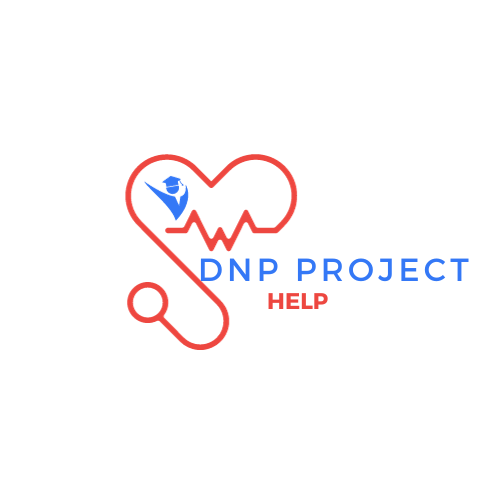
Capstone Project Assessment 4
For this assignment, you’ll create a detailed research plan spanning 5 to 9 pages, building on your previous assessments. You’ll choose either qualitative or quantitative methods, not both. Along with improving your earlier work, you’ll also talk about reliability and validity in gathering data.
Introduction
Note: The assessments in this course are designed to progress sequentially. It’s highly recommended that you complete them in the order they are presented to maximize your learning experience.
When doing research, it’s easy to veer off in different directions instead of focusing on a clear goal. This can lead to parts of the research that don’t fit together, especially for beginners. For your final assessment, it’s important to make sure that everything you submit—like the problem statement, purpose statement, research questions, and how you collect data or choose samples—fits together. This review will help you create a focused research plan that’s more likely to answer your research question successfully.
An important aspect to consider in a research plan is the reliability and validity of both the data and the tools used for collection. Due to practical reasons, researchers often choose a sample from a larger population since it’s not feasible to study everyone. In quantitative research, statistical formulas are employed to figure out the necessary sample size to ensure the study’s results are valid. Meanwhile, qualitative studies typically accept a rule of thumb of having 12 to 20 participants, based on the overall population, provided they meet specific criteria outlined for the study. The sample should represent the entire population as closely as possible. By analyzing the gathered data, researchers can discern causation, correlation, or inference.
Keep in mind that reliable data are findings that can be replicated. This means that the results remain consistent across various samples and timeframes. Valid data, on the other hand, are accurate and pertinent to the research topic.
Demonstration Of Proficiency
By successfully completing this assessment, you’ll demonstrate proficiency in the following course competencies and assessment criteria:
Competency 1: Understanding various types of healthcare research methodologies.
- Explain a chosen data collection method within a research plan.
- Describe a data collection method that is contextually valid.
Competency 2: Developing a research question focused on a hospital-acquired condition.
- Explain a given research problem within a research plan.
- Explain a given purpose statement within a research plan.
- Explain a given research question within a research plan.
Competency 3: Planning a research project.
- Explain the reliability and validity of measurements within a specific context.
- Integrate different components of a research plan into a coherent whole.
Competency 4: Effective and respectful communication consistent with professional healthcare standards.
- Communicate professionally and respectfully, considering the diversity, dignity, and integrity of others, in alignment with healthcare professional expectations.
Instructions
The aim of a research plan is to offer a concise summary of the main elements of a planned research study, ensuring quality in the research process. Throughout this course, you’ve gradually crafted a condensed research plan aimed at enhancing a process to reduce the occurrence of a hospital-acquired condition (HAC) of your choosing. As you’ve advanced through the course, you might have refined your thoughts and revised your writing based on newfound knowledge and expertise gained.
For this final assessment, merge pertinent content from your previous assessments into a cohesive research plan. Ensure to integrate any helpful feedback provided by your instructor and properly acknowledge all resources used to bolster your plan.
For this assessment, it’s recommended that you expand upon the work you completed in the Research Problem and Purpose Statements assessment, as well as the research question and methods assessment aligned with the method you selected.
This assessment has four distinct parts:
Part 1: Problem Statement
Relevant Scoring Guide Criteria:
- Explain a given problem statement in the context of a research plan.
- Align the separate parts of a research plan into a unified whole.
- Communicate in a manner that is scholarly, professional, and respectful of the diversity, dignity, and integrity of others and is consistent with expectations for health care professionals.
In this section, provide your updated and finalized problem statement, building upon the work you completed in the Research Problem and Purpose Statements assessment.
Furthermore, explain how the purpose statement is rooted in the context and evidence of your chosen hospital-acquired condition (HAC) and the healthcare setting serving as the foundation for your research plan. Additionally, highlight how the problem statement will contribute to establishing alignment among other components of the research plan.
This section should be about one page in length.
Remember, the checklist below when finalizing your problem statement.
Problem Statement Checklist
Identify the problem that led to the research.
- Is it easy to determine?
- Were there identifying words provided that justify the problem?
- Was the rationale or justification of the problem clearly stated?
- Do the words in the problem statement indicate the kind of study performed? Which words in particular?
- Was the evidence for the problem provided in the literature?
Part 2: Purpose Statement
Relevant Scoring Guide Criteria:
- Explain a given purpose statement in the context of a research plan.
- Align the separate parts of a research plan into a unified whole.
- Communicate in a manner that is scholarly, professional, and respectful of the diversity, dignity, and integrity of others and is consistent with expectations for health care professionals.
In this part, share your updated and complete purpose statement, building upon the progress made in the Research Problem and Purpose Statements assessment.
Moreover, elaborate on how the purpose statement is rooted in the context and evidence surrounding your selected hospital-acquired condition (HAC) and the healthcare setting forming the backbone of your research plan. Additionally, highlight the alignment between the purpose statement and your problem statement, and discuss how it will guide a consistent choice of methodology for other aspects of the research plan.
This section should be one to two pages in length.
Remember to use the checklist below when finalizing your purpose statement.
Purpose Statement Checklist:
Identify the purpose that led to the research study.
- What does the study hope to accomplish? What are the desired outcomes?
- Was the rationale or justification of the purpose clearly stated?
- Do the words in the purpose statement indicate the kind of study performed? What words in particular?
- Was the item cited as evidence for the purpose published within the last five years?
Part 3: Research Question
Relevant Scoring Guide Criteria:
- Explain a given research question in the context of a research plan.
- Align the separate parts of a research plan into a unified whole.
- Communicate in a manner that is scholarly, professional, and respectful of the diversity, dignity, and integrity of others and is consistent with expectations for health care professionals.
In this section, present your updated and finalized research question, which should stem from the progress made in either the Qualitative Research Questions and Methods or the Quantitative Research Questions and Methods assessment.
Furthermore, explain how the research question is rooted in the context and evidence of your chosen hospital-acquired condition (HAC) and the healthcare setting forming the basis of your research plan. Additionally, emphasize the alignment between the research question and the purpose of your research plan, as well as how addressing it will help tackle your research problem. You should also discuss how the research question serves as a guide for aligning data collection methods.
This section should be one to two pages in length.
Depending on your chosen methodology, the checklists below could be useful.
| Qualitative Research Question Checklist: | Quantitative Research Question Checklist |
| Does the purpose statement fit logically with the problem statement? Are there similar words or does it seem to address a different topic? Do the research questions align with the method and design of the study? For instance, are words like perception used that would automatically reject a quantitative study? Do questions seek to describe responses to the variables described in the study? Do the questions begin with the word why? Do the questions focus on a single phenomenon? Do the questions include exploratory verbs? Is the language nondirectional?Are the questions open ended? Do the questions specify the participants and research site? | Does the purpose statement fit logically with the problem statement? Are there similar words or does it seem to address a different topic? Based on the problem statement, do the research questions align with the method and design of the study? Do questions seek to describe responses to the variables described in the study? Do the questions include words like compare, correlate, or other words that indicate a quantitative study? Do the questions include identification of the independent and dependent variables? Does the hypothesis fit with the research questions? Do the questions and hypothesis identify the participants for the research study? Do the questions and hypothesis specify the participants and the research site? |
Part 4: Data Collection, Reliability, and Validity
Relevant Scoring Guide Criteria:
- Explain a chosen data collection method in the context of a research plan.
- Describe a contextually valid data collection method.
- Explain contextual measurement reliability and validity.
- Align the separate parts of a research plan into a unified whole.
- Communicate in a manner that is scholarly, professional, and respectful of the diversity, dignity, and integrity of others and is consistent with expectations for health care professionals.
In this part, you’ll build upon the data collection methods, tools, and strategies outlined in either the Qualitative Research Questions and Methods or the Quantitative Research Questions and Methods assessment. Ensure that you select data collection considerations that match the methodology of your research question.
Describe how your chosen data collection methods will maintain validity within the context of your selected hospital-acquired condition (HAC) and healthcare setting, as well as your chosen methodology. Additionally, explain how the measurements generated by your selected collection methods are both reliable and valid. Finally, discuss how these data collection methods are aligned to provide information that will aid in answering the research question and offer an opportunity to address the research purpose and problem.
ADDITIONAL SUBMISSION REQUIREMENTS
- Structure: Include a title page, table of contents, and reference page.
- Length: There is not length requirement for this assessment. Most submissions that fully address all scoring guide criteria will be 5 to 9 pages in length.
- References: Cite at least five current scholarly or professional resources.
- Format: Use APA style for references and citations.
- You may wish to refer to the following APA resources to help with your structure, formatting, and style:
- Font: Times New Roman font, 12 point, double-spaced for narrative portions only.
Resources: Research Plans
RESEARCH PLANS
- National Institute of Allergy and Infectious Diseases. (n.d.). Write your research plan. Retrieved from https://www.niaid.nih.gov/grants-contracts/write-r…
- This website lays out a process for writing a research plan, as well as provides advice for structural and writing considerations.
- National Institutes of Health Medical Rehabilitation Coordinating Committee. (2017). National institutes of health research plan on rehabilitation. The American Journal of Occupational Therapy, 71(3), 1–5.
- This is an example of an actual research plan. While your plan for this course will not necessarily need to be as in depth, this article could be helpful in giving you ideas for structure of your Develop a Research Plan assessment.
- Babbie, E. R. (2017). The basics of social research (7th ed.). Boston, MA: Cengage. Available from the Bookstore.
- Chapter 4, “Research Design.”
Resources: Data Validity and Reliability
- VALIDITY AND RELIABILITY
- Heffner, C. L. (2018). Chapter 7.3: Test validity and reliability. Retrieved from: https://allpsych.com/researchmethods/validityrelia…
- This website provides a brief overview of the key considerations with regards to validity and reliability, as well as the difference between them.
- Leung, L. (2015). Validity, reliability, and generalizability in qualitative research. Journal of Family Medicine and Primary Care, 4(3), 324–327. Retrieved from https://doaj.org/article/a65a7e849988441390fd36d91…
- This article uses a case study approach to illustrate the value of qualitative research and how concepts such as validity and reliability can be examined.
- Vogt, W. P., Gardner, D. C., & Haeffele, L. M. (2017). When to use what research design. New York, NY: Guilford.
- Chapter 3, “When to Use Experimental Designs.”
- This chapter has some discussion on data validity from experiments.
- Conclusion, “Culmination of Design, Sampling, and Ethics in Valid Data Coding.”
- The conclusion provides some summative remarks on how to work towards ensuring data from a study is valid and reliable.
- Chapter 3, “When to Use Experimental Designs.”
- Heffner, C. L. (2018). Chapter 7.3: Test validity and reliability. Retrieved from: https://allpsych.com/researchmethods/validityrelia…
OPTIONAL – VALIDITY AND RELIABILITY
- Merriam, S. B., & Tisdell, E. J. (2015). Qualitative research: A guide to design and implementation. San Francisco, CA: Jossey-Bass.
- Chapter 9, “Dealing with Validity, Reliability, and Ethics.”
Resources: Vila Health: Research Plans
- This second interaction with the Vila Health simulation will provide you with a basis for beginning to develop an actual research plan. The research plan you develop for the Develop a Research Plan assessment should be based on a hospital-acquired condition (HAC) that you have used in one or more of your previous assessments.
Resources: Capella Library and APA Style
- CAPELLA UNIVERSITY LIBRARY
- Health Care Administration Undergraduate Library Research Guide.
- This library guide provides many useful links to resources relevant to research and locating sources related to health care topics.
- Health Care Administration Undergraduate Library Research Guide.
APA STYLE AND RESOURCES
- APA Style and Format.
- General guide to APA style and formatting.
- APA Paper Template.
- A template that has been set up with some APA formatting and style rules.
- APA Paper Tutorial.
- Guide on how to make use of the APA Paper Template.
CAPELLA UNIVERSITY WRITING CENTER
- Capella Writing Center.
- Writing center homepage. This links out to numerous resources and tutorials that could help you improve the quality of your academic writing.
Requirements: 5-9 PAGES



